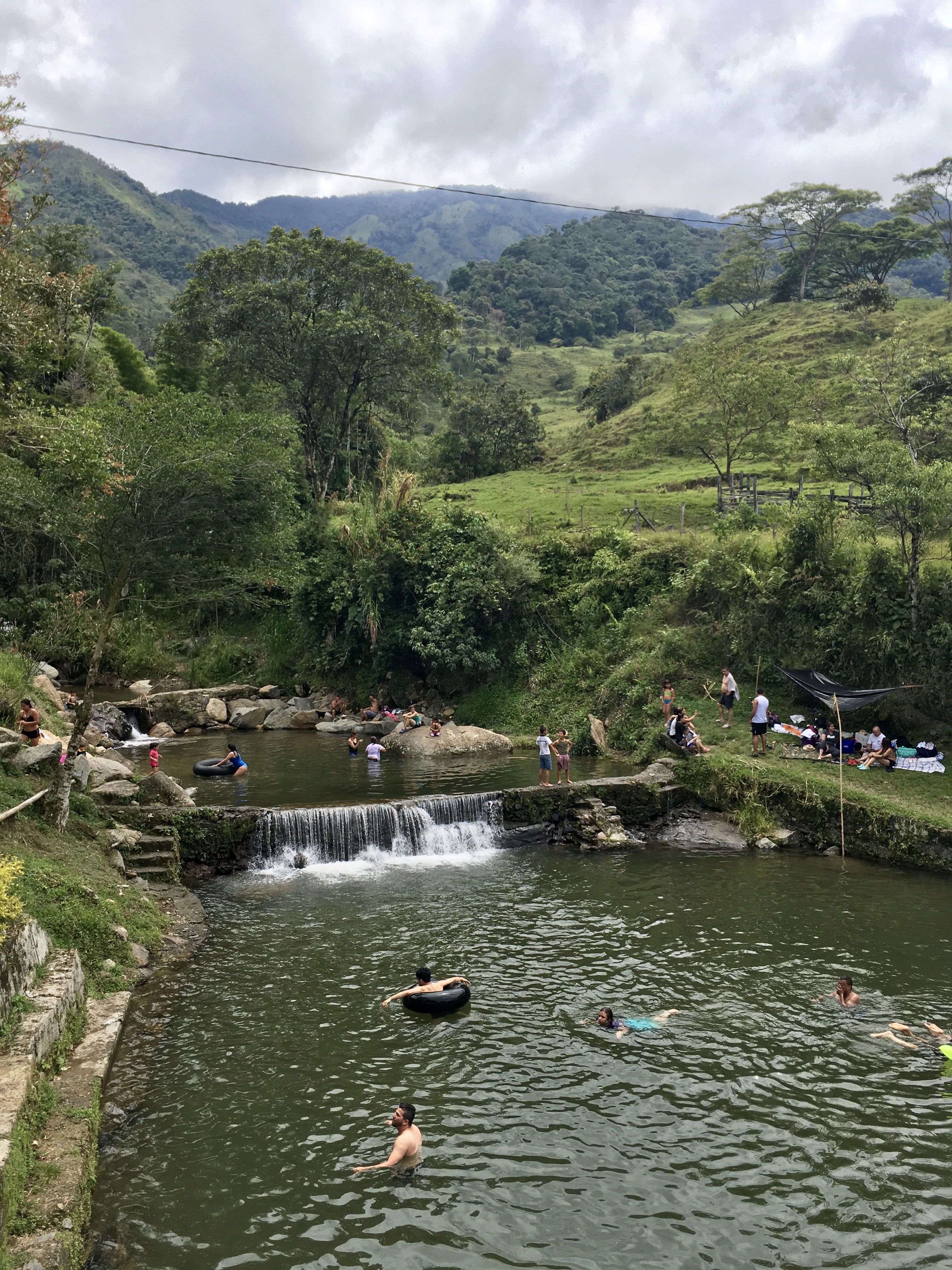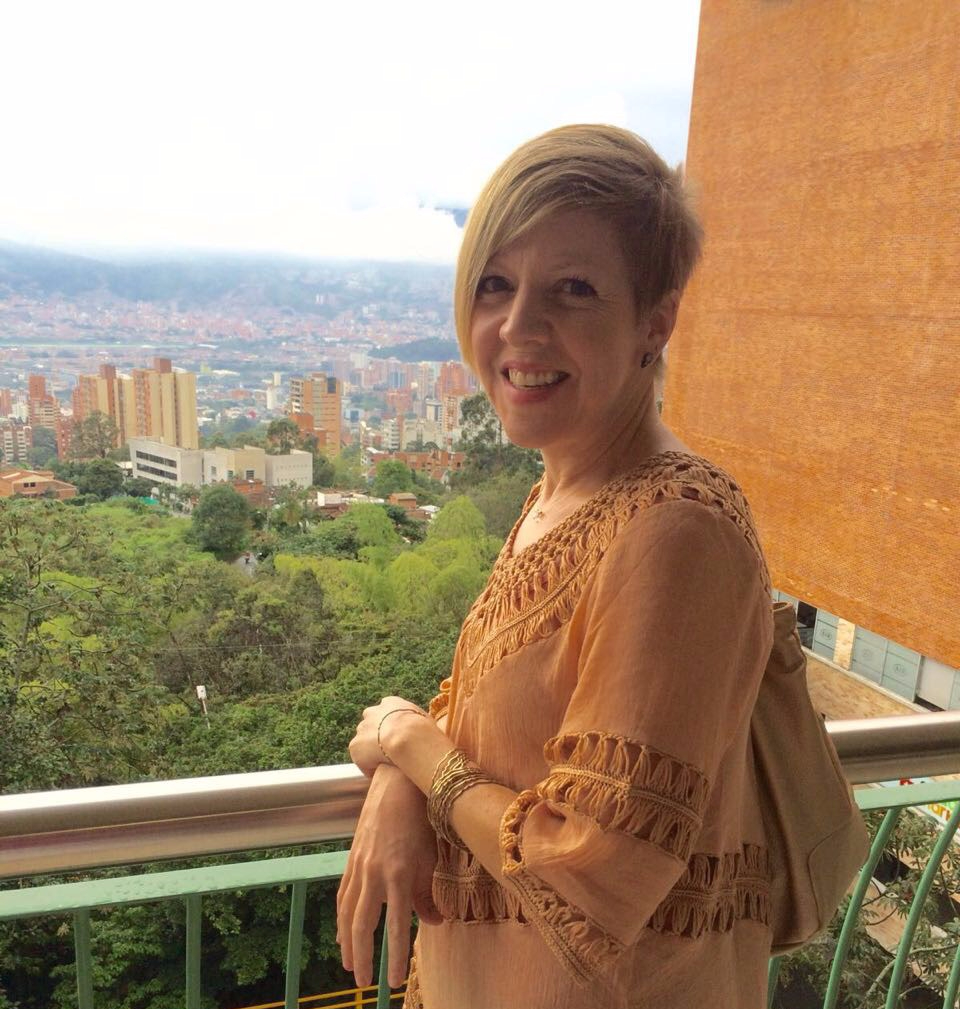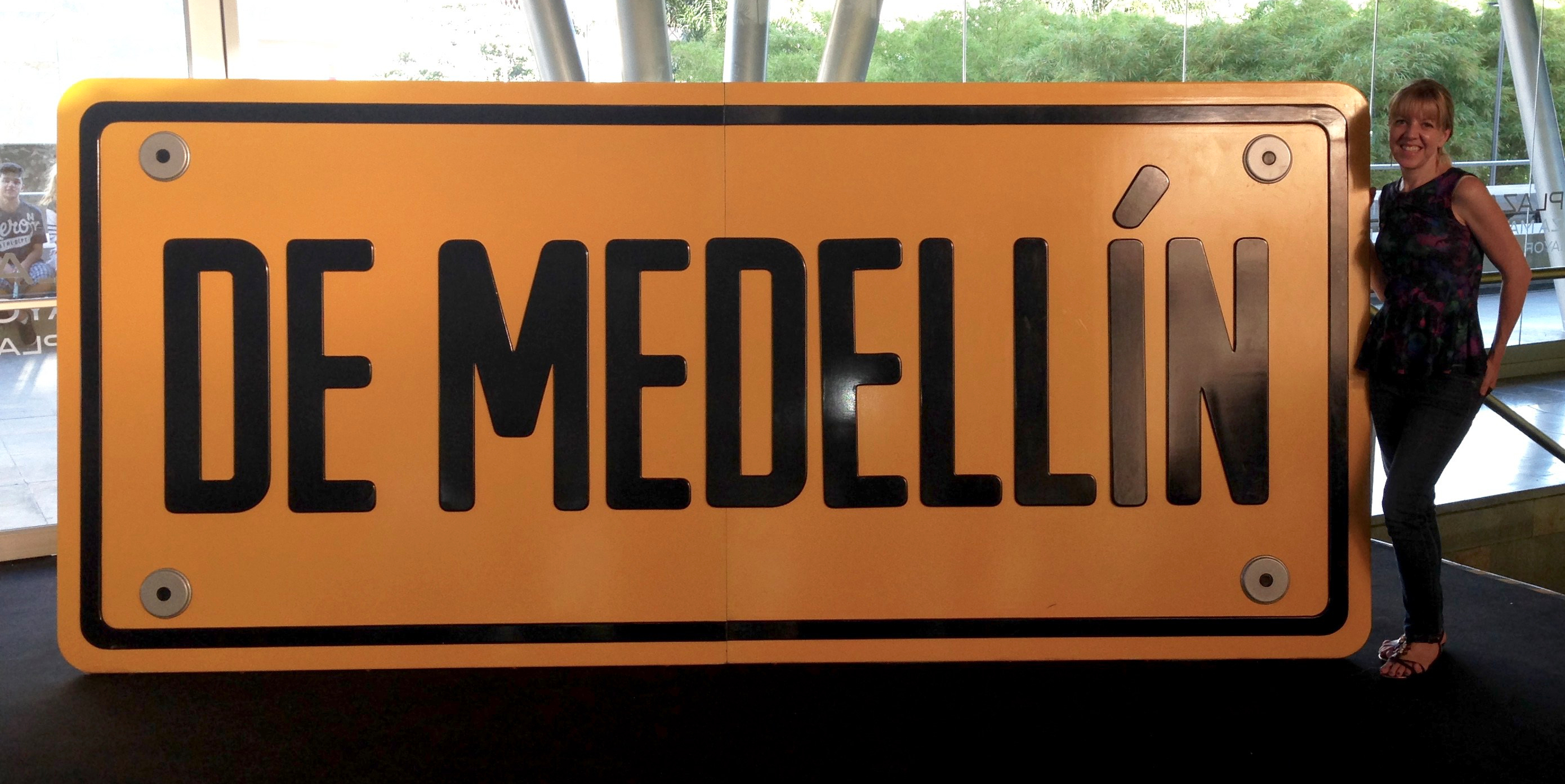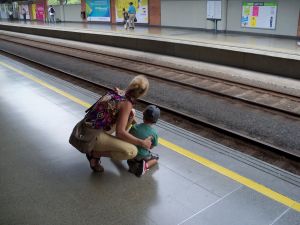Last month, I traveled to Jardín, a pueblo just south of Medellín. Although its fame is rising, Jardín has become a destination for foreign travelers relatively recently. While it lacks the polish of a town that has honed its tourism industry to a foreign-demand-meeting perfection, it gleams radiant with an authenticity already lost or waning in other locales.
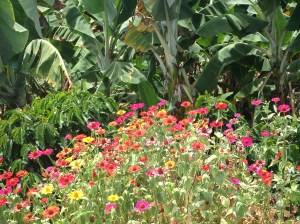
Jardín, living up to its moniker.
Locals and tourists alike sit in the main plaza drinking beer or coffee ’til the wee hours, often watching others show off their riding skills on horses that dance around the periphery. Shortly after the revelers turn in, the bells of the church ring at an ungodly hour – 4:00 a.m. or something – to announce the day’s first Mass.
Jardín’s name – literally, “Garden” – is apt. It’s nestled in the mountains, surrounded by lush vegetation and waterfalls.
The road to Jardín from Medellín is less idyllic. It’s far easier to drive 45 minutes on impeccable roads to El Retiro or Guatapé than to venture three hours south on the winding, crumbly vías that lead to Jardín. Traffic due to road construction to prevent rockslides stopped us for so long at one point that I got out to walk. Later in the drive, I saw signs to Salgar, where on May 18 a flooding river triggered a landslide that killed some 95 people and left countless without homes. The buses on the route are piloted by very experienced drivers or near-madmen, I’m not sure which, who careen around blind curves in the wrong lane. The communities on the way have rhythmic names that seem out of a Spanish-language Mother Goose: Titiribí and Bolombolo, for example. The signage, or lack thereof, is terrible. But oh, the scenery. Oh the magic.
And by the way, if you do make a wrong turn, it may set you back a couple of hours as it did us, but then you get to see nearby towns like Betania, perched on the edge of the mountains, with locals friendlier than anywhere I have met in all of Colombia, which is saying a lot since this is a friendly place.
When you finally arrive in Jardín, you’ll know it was worth it. A special treat for us was a half-day at Finca Los Ángeles, where the family there taught us about coffee cultivation and the coffee market worldwide, while Doña Ángela prepared a farm-to-table lunch (for real, people) that would rival any big-city fine dining. Coffee cultivation in the region began when a caffeine-loving priest started having parishioners plant it as a penance, or so we were told by a local guide.
But enough words. Here are the pics. Click to scroll through full-size versions.

The countryside as seen from Betania, a lovely town we came across after taking a wrong turn.

More countryside around Betania.

The church in Betania’s town square.

A ginormous stick bug. What do you mean that’s not the scientific name?

Murals being painted on the outer wall of the local stadium. I love murals.

In the old days, windows in the fancy part of town were built at the perfect height for peering inside, and owners kept the shutters open so you could marvel at their wealth – and/or their gorgeous plants.

Jardín’s cathedral.

Jardín is famous for its sweets – jams and such. I was more intrigued by the lush seating area in the sweet shop.

Not much makes a 4-year-old happier than throwing rocks in a creek…

… except maybe carrying a big stick.

Who can tell me what kind of next this is? They were all over.

A big-a** spider. Big, really big.

Purple flowers. Nope, I don’t know what kind.

A perfect cup of coffee.

Because all squash (an auyama in Spanish, or as I prefer to refer to them – pijama) should have a Spider-Man ball cap.

The head of Finca Los Ángeles took us on a personal tour.

Marcello helps pick some coffee berries.

The view from Finca Los Ángeles.

Reaching for an orange, my son almost put his hand directly on this fluffy guy.

Jardín, living up to its moniker.

Where the coffee beans to to dry.


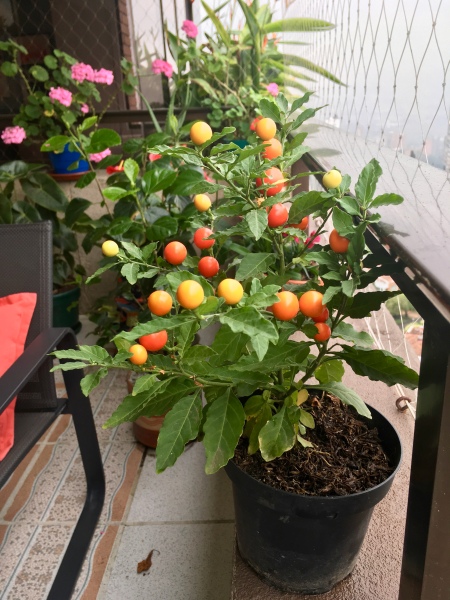

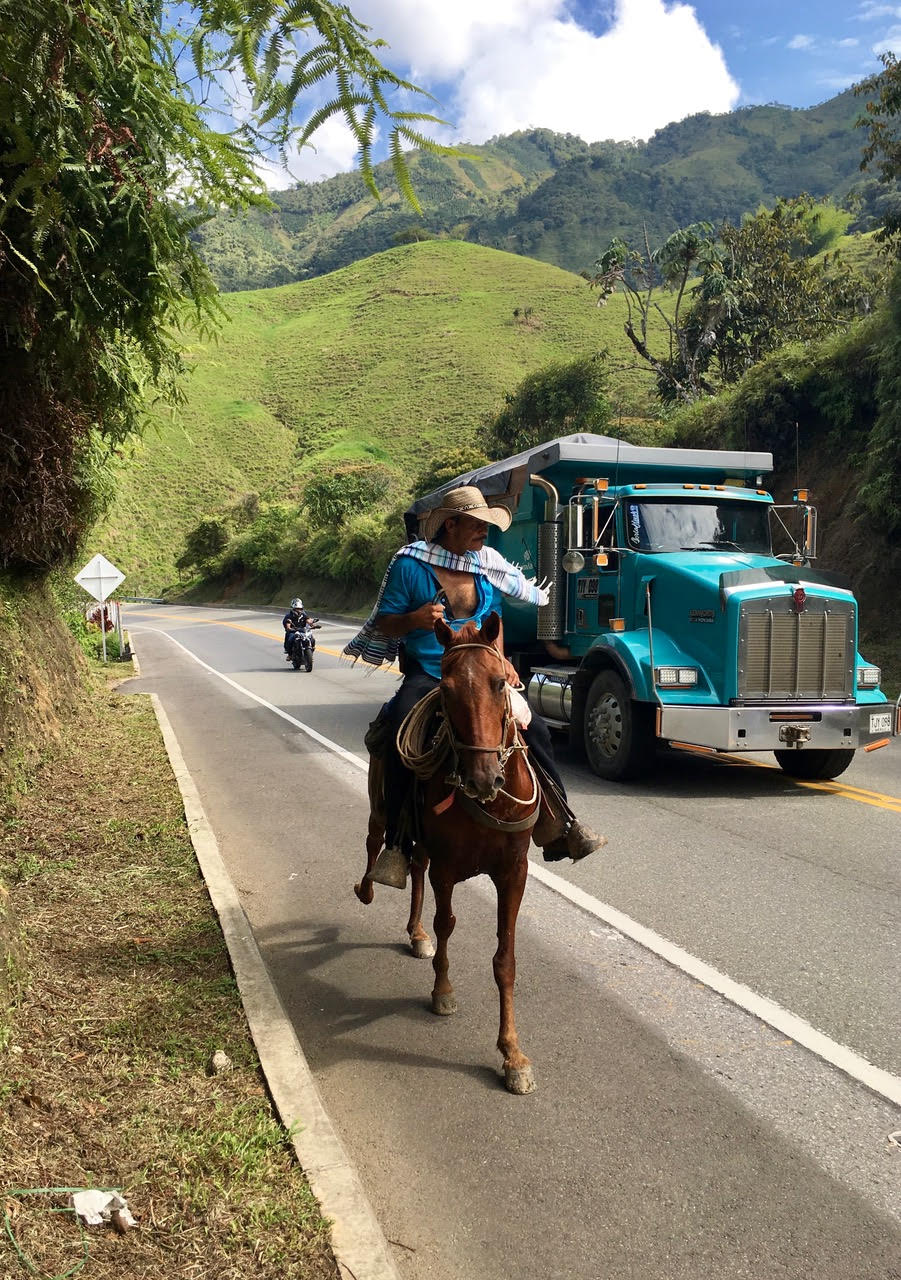 Sometimes it seems horses and motos frequent the Autopista Medellín-Bogotá nearly as often as the trucks for which it’s intended. As the two-lane passes through Antioquia, the Colombian state dominated by Medellín, it yields views of waterfalls and easy access to charcos, or natural swimming holes.
Sometimes it seems horses and motos frequent the Autopista Medellín-Bogotá nearly as often as the trucks for which it’s intended. As the two-lane passes through Antioquia, the Colombian state dominated by Medellín, it yields views of waterfalls and easy access to charcos, or natural swimming holes.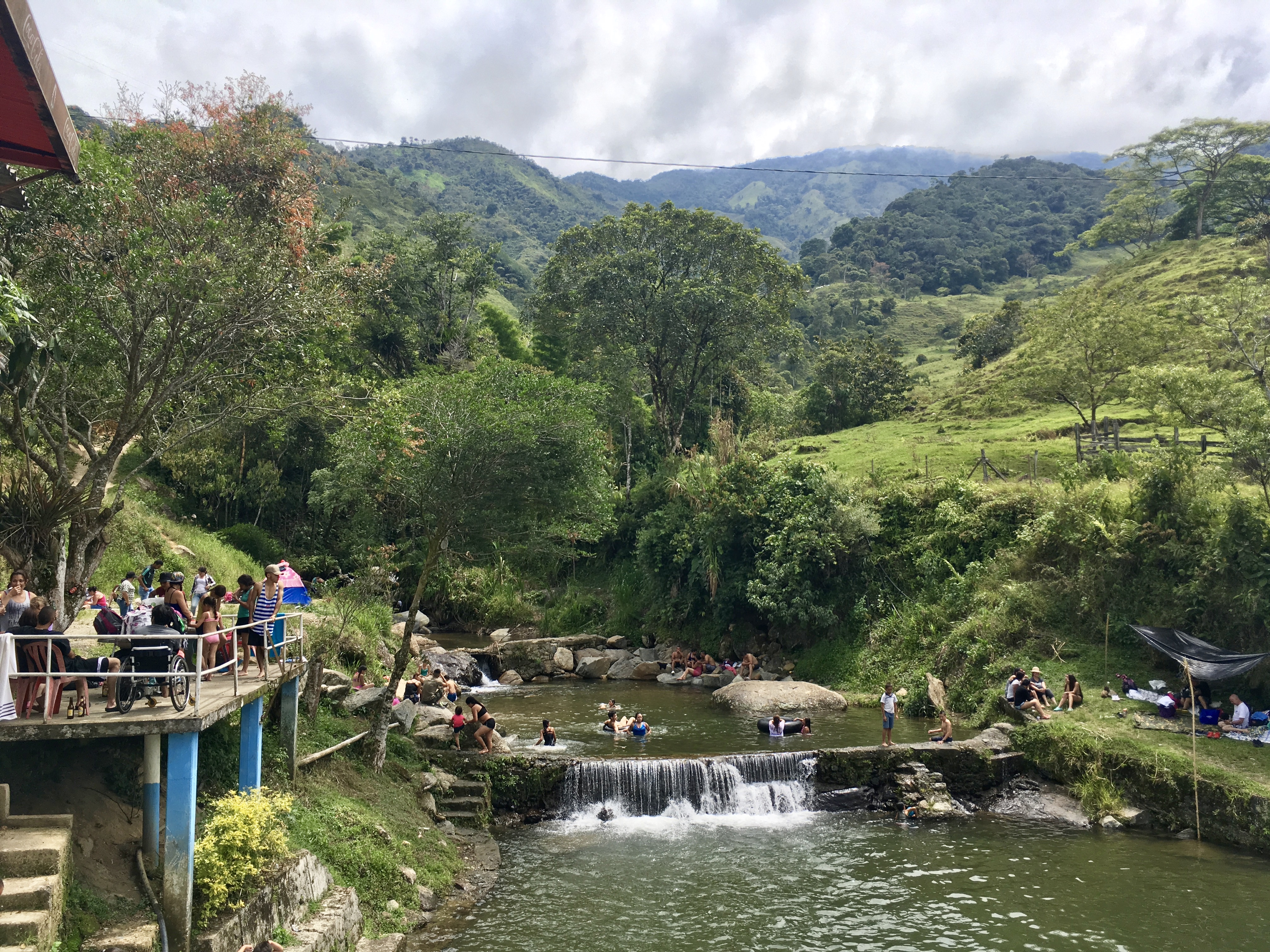 Past the Santuario toll (always much further past than the locals say), not far from Cocorná, lies the Hotel-Restaurante El Descanso. In the US, it would be only a truck stop – oil leaches slowly from the undercarriage of parked semi nearby – but here the adjacent charco makes it something more.
Past the Santuario toll (always much further past than the locals say), not far from Cocorná, lies the Hotel-Restaurante El Descanso. In the US, it would be only a truck stop – oil leaches slowly from the undercarriage of parked semi nearby – but here the adjacent charco makes it something more.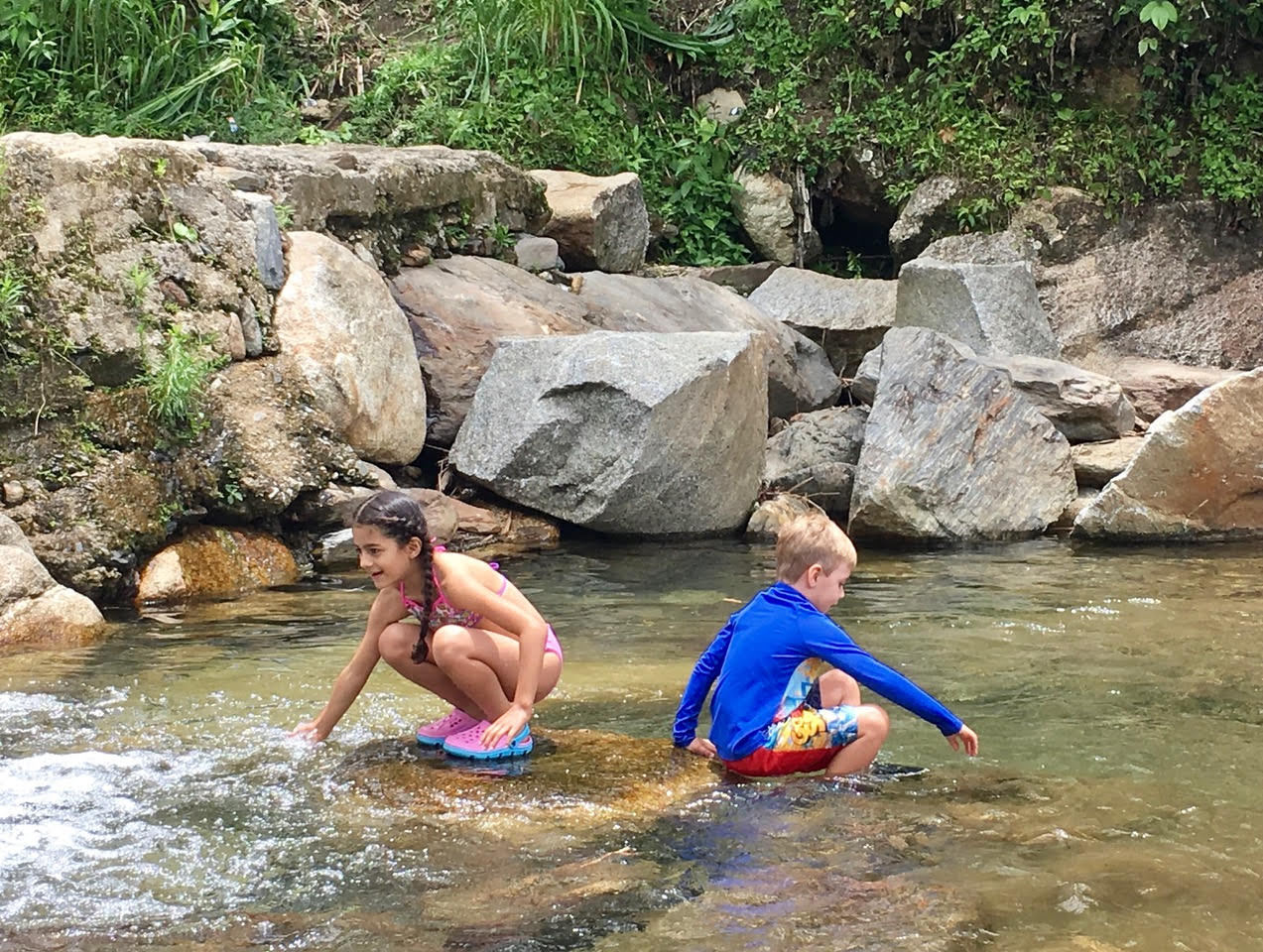 On weekends, locals gather to drink and chat by the quebrada’s banks and take dips in the icy cold waters. In the shallows, children splash and squeal; young men teach the newbies to skip stones. A very old man, unable to walk, lies on a grassy spot, wrapped in blankets and attended to by his wife.
On weekends, locals gather to drink and chat by the quebrada’s banks and take dips in the icy cold waters. In the shallows, children splash and squeal; young men teach the newbies to skip stones. A very old man, unable to walk, lies on a grassy spot, wrapped in blankets and attended to by his wife.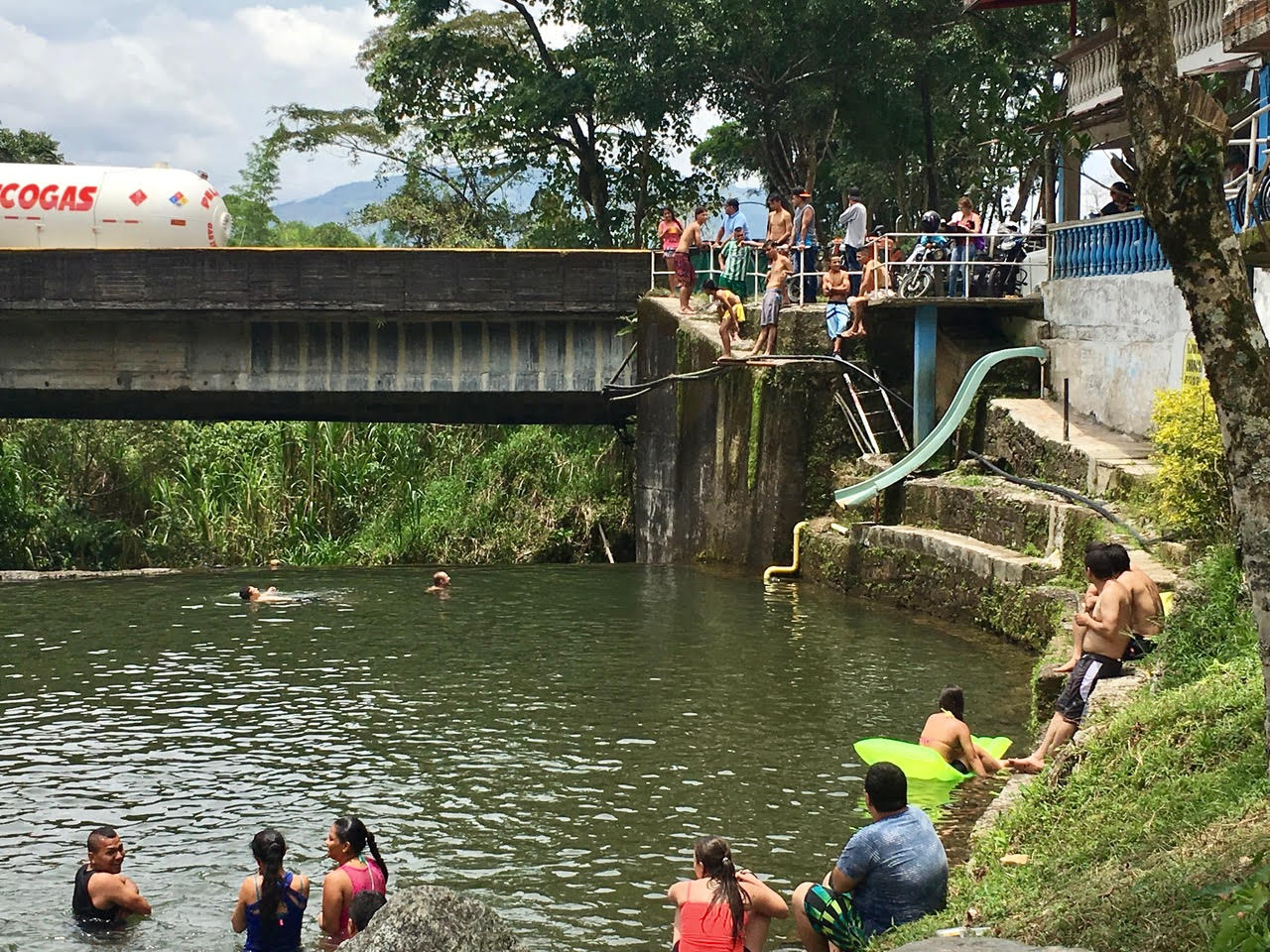 Young people congregate around the deep end and on the balcony of the tiendita above. A cracked pool slide remains installed in the concrete embankment. On the makeshift diving platform, a girl readies herself to leap as a tanker truck roars by. She backs away as those below yell encouragement.
Young people congregate around the deep end and on the balcony of the tiendita above. A cracked pool slide remains installed in the concrete embankment. On the makeshift diving platform, a girl readies herself to leap as a tanker truck roars by. She backs away as those below yell encouragement.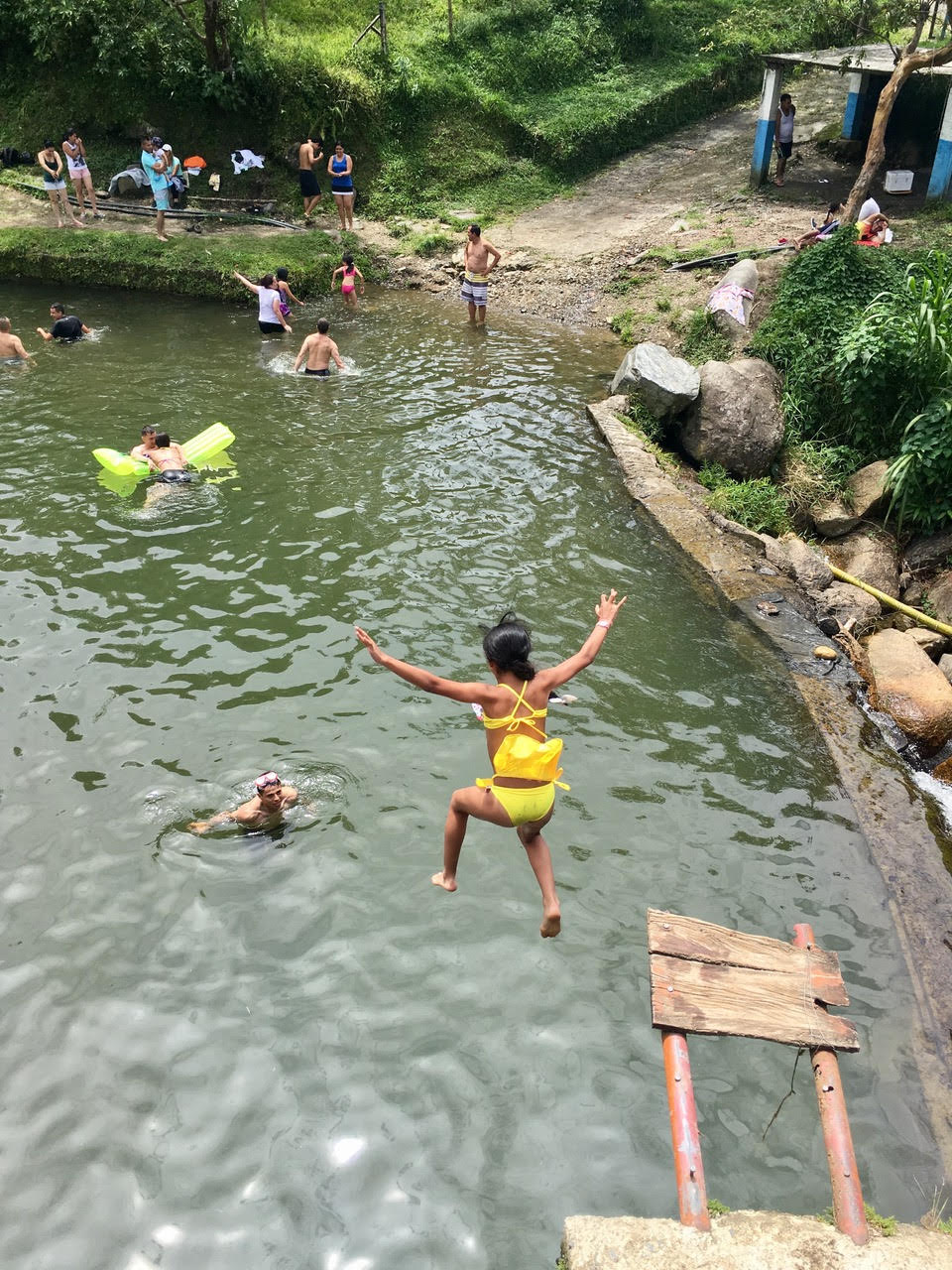 After several minutes of indecision, the girl is airborne. She doesn’t dive head first to meet her reflection, as some of the adult males have done, but she’s the youngest to make the attempt today. Those watching break into smiles as she surfaces.
After several minutes of indecision, the girl is airborne. She doesn’t dive head first to meet her reflection, as some of the adult males have done, but she’s the youngest to make the attempt today. Those watching break into smiles as she surfaces.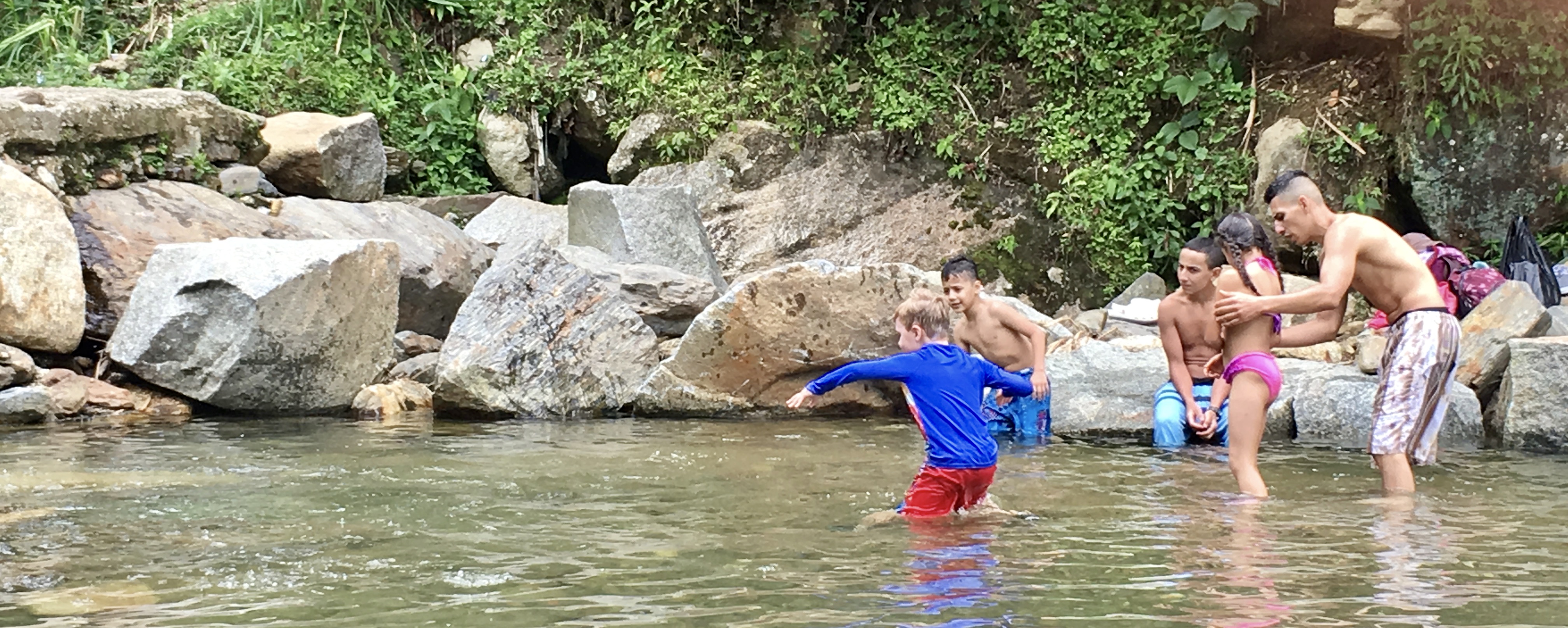 Learning to skip stones.
Learning to skip stones.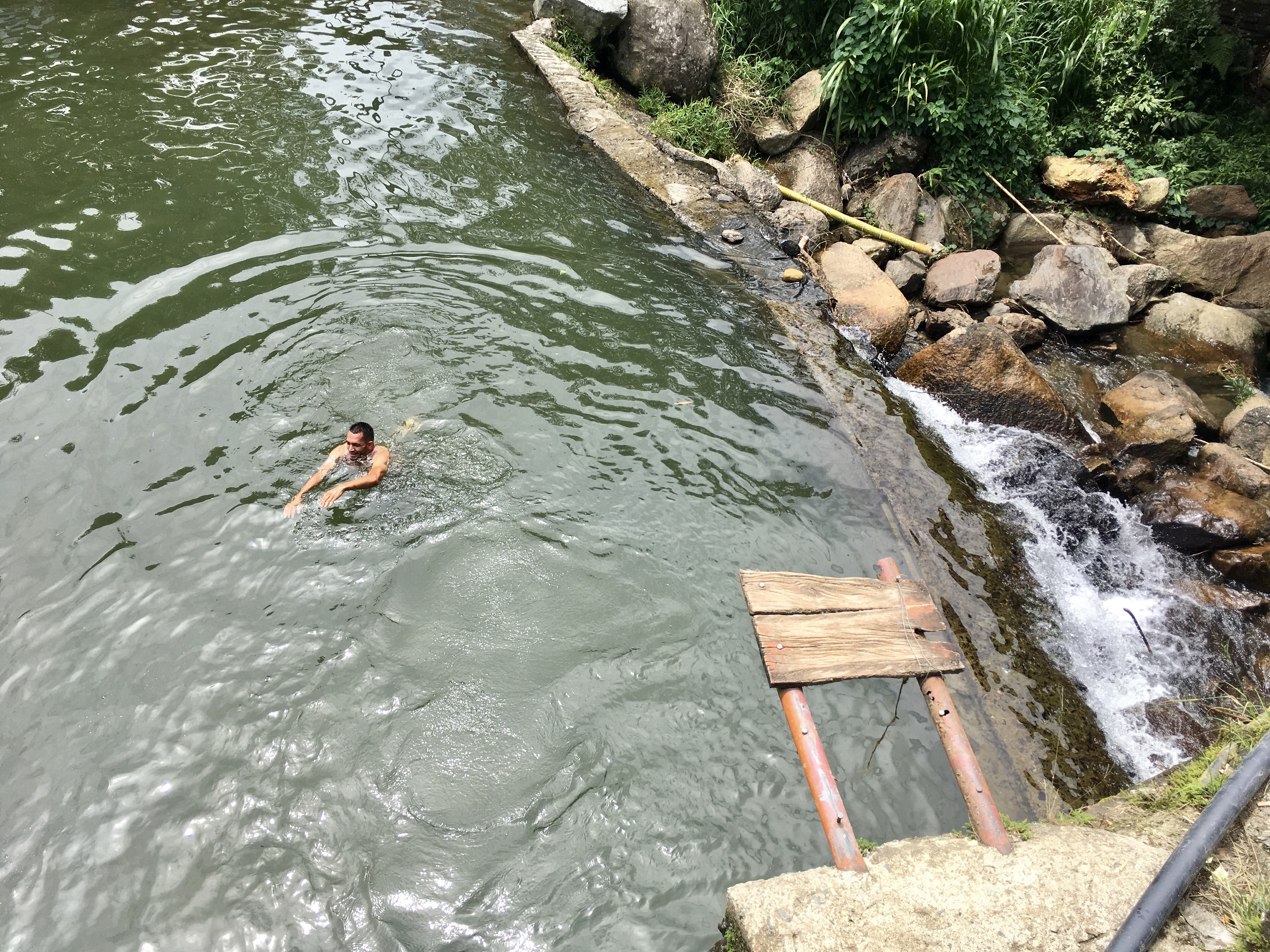 The diving platform.
The diving platform.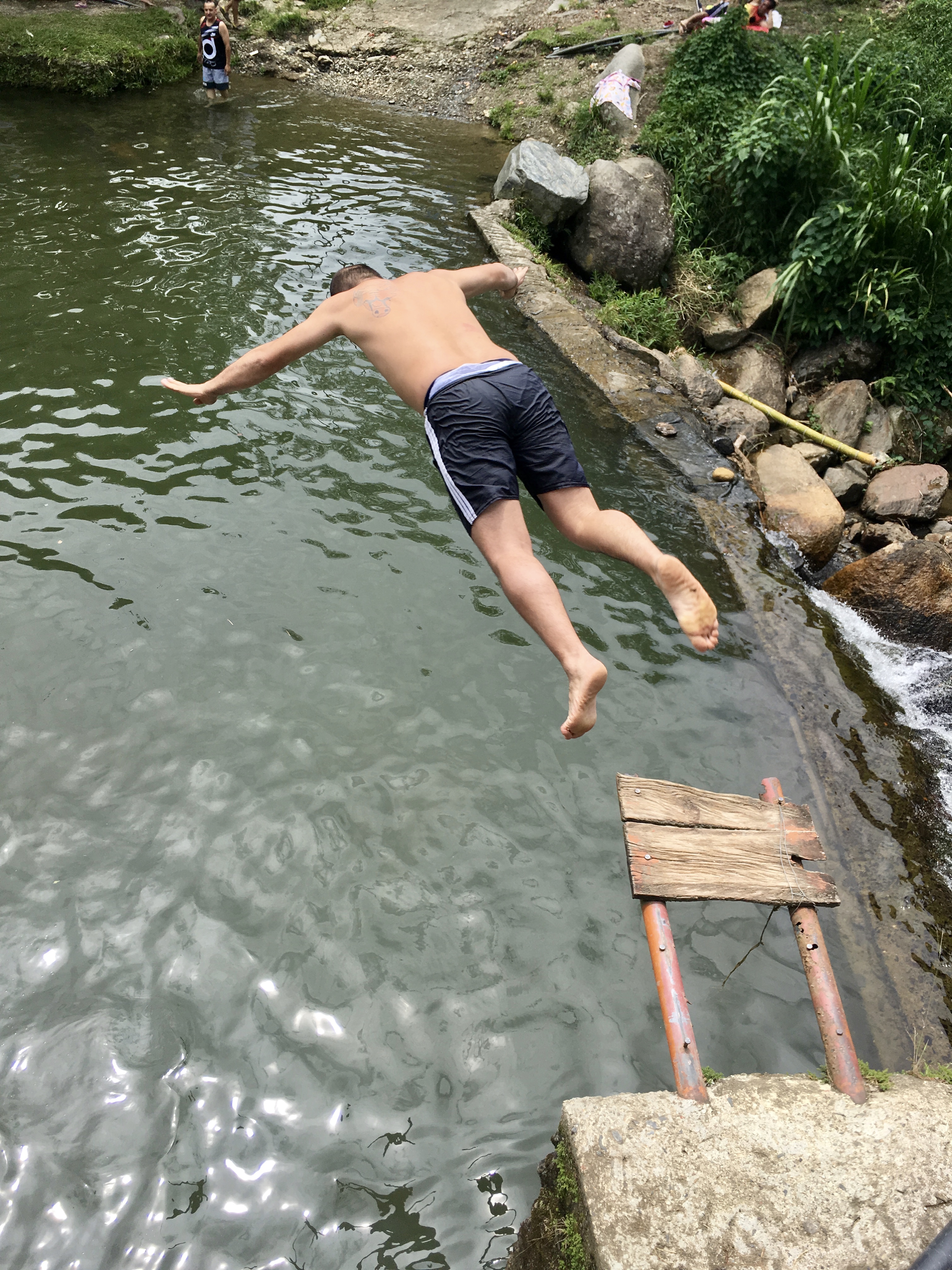 And he’s off!
And he’s off!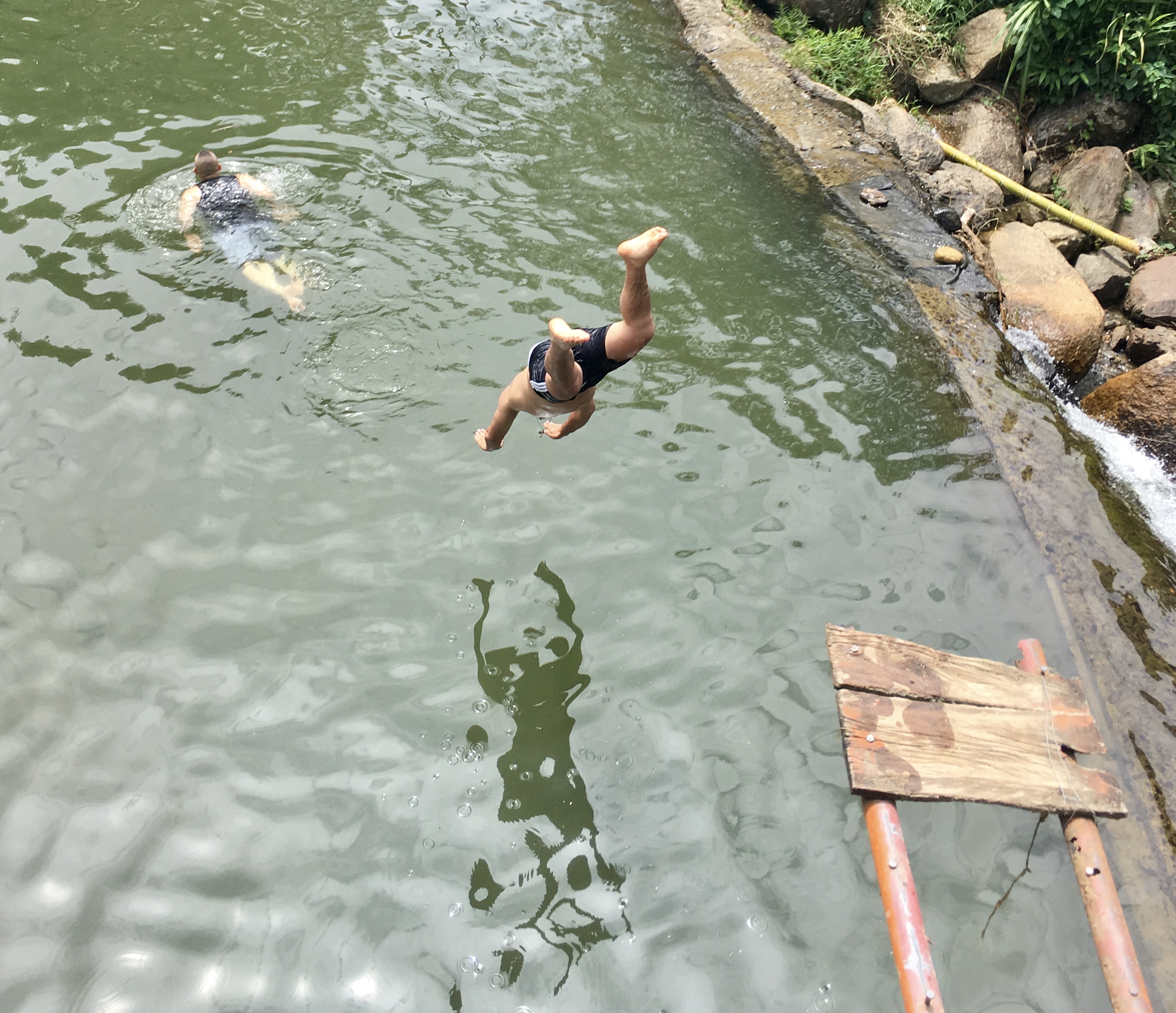 Man meets himself.
Man meets himself.